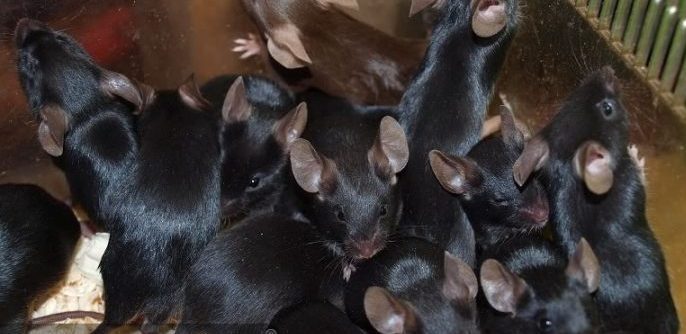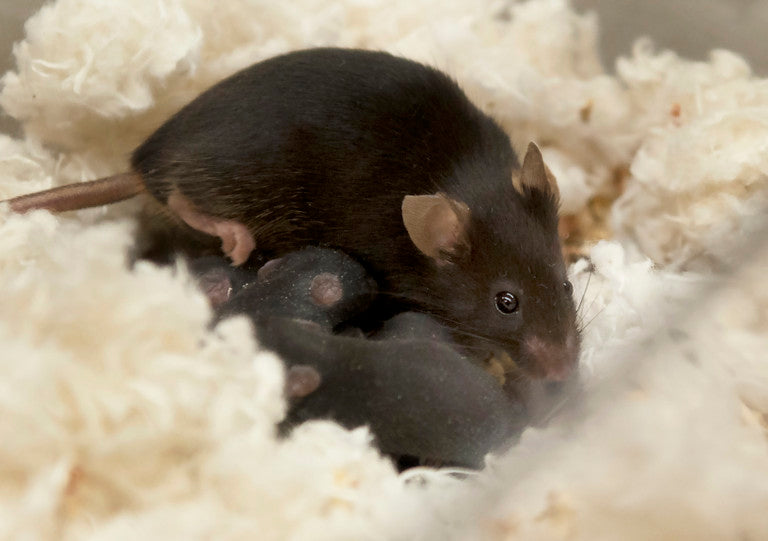For more on cannibalism, also read our most recent blog
Cannibalism in Laboratory Rodents: Stressors to Avoid
Mice and rats are no exception: in laboratory mouse breeding colonies, the loss of pups due to cannibalism is a common issue—so common, in fact, that it is often overlooked or accepted as normal. However, cannibalism should be considered a serious problem in the lab animal vivarium: successful breeding is a critical part in providing animals for research. Reduced breeding performance leads to increased costs and inefficient production going against the 3Rs principal of replace, reduce, and refine how animals are used in research, and can even cause the loss of precious transgenic lines. In a way, it is indicative of reduced wellbeing, and is an underestimated welfare issue in laboratory mouse breeding.
Limit Stressors
Possible causes for cannibalism in laboratory mice are multiple. A foreign smell on the pups can confuse the female, leading to neglect or abandonment and later cannibalization. Try to avoid touching newborns. If you do have to check on them, rub your gloved hands in the cage bedding a few seconds to transfer the smell. If you need to change the cage, transfer the whole nest (pups, nesting material and some bedding) in your cupped hand.
Any kind of stressors can also affect the females and pups negatively. In the animal room, try to limit animal handling, noise, vibrations, bright light, environmental smells, and keep a set dark/light schedule and steady temperature (1). Providing nesting material plays a huge role in breeding success, as pups from active females that spend more time nest building before parturition have a higher chance of survival (2). Offering extra environmental enrichment such as extra bedding, a shack/house, tunnel, or paper tissues results in decreased pup mortality and increased pup weight (3) .
Providing foraging opportunities can also distract the breeders and reduce stress. The results from our "Breeding Support and Pup Health" survey indicates that 27% of respondents use sunflower seeds as a foraging enrichment for their breeders—a way to distract them, reduce stress, and decrease food grinding. ClearH2O's DietGel® Prenatal contains sunflower seeds as foraging enrichment.
Provide Appropriate Nutrition
Some strains are more prone to cannibalism, such as C57BL/6 and BALB/c, which will eat up to 30% of their litters. In particular, C57BL/6 are considered poor first time moms, and will often cannibalize their first litter. Mice and rats are also more likely to consume their abnormal, defected or diseased infants (4) .
A study from Indiana University with DBA/2 mice showed that providing DietGel® 76A to breeder cages reduced cannibalism by about half. In parallel, a study from Tufts University on C57BL/6 mice showed that adding DietGel® 76A to breeder cages increased pups survival to wean age by about 40%.
To try our products first hand, REQUEST A FREE SAMPLE NOW!
Lack of certain nutrients in the diet, either from scarcity of food supply, malnutrition, unsuitable diets or supplements or by some sterilization methods, are also responsible for a high percentage of pre-weaning loss and cannibalism in rodents (5) . DietGel® Prenatal contains a full spectrum of vitamins and minerals, including essential vitamin B (1 mg of Vitamin B3 (Niacin) and 51.1 mcg of Vitamin B9 (Folate) per 100g). Cannibalism may result from a specific need for protein, and lower protein levels have been linked to higher cannibalism in some species. DietGel® Prenatal contains 14.3 g of protein per 100 g, providing filling nutrients when the females need it the most.
For more information on breeding colony management, download our Best Practices for Rodent Colony Planning, Breeding Support, and Pup Health Guide.
References
(1) Effect of cold stress on infanticide by female Swiss albino mice Mus musculus: a pilot study. Zafar et al., J. Anim, Sci.Technol 2018
(2) Do Laboratory Mouse Females that Lose Their Litters Behave Differently around Parturition? Weber et al., PloS One 2016
(3) Environmental enrichment prevents pup mortality in laboratory mice. Leidinger et al., Lab Anim 2019
(4) Pup mortality in laboratory mice--infanticide or not? Weber et al., Acta Vet Scand 2013
(5) Diets derived from maize monoculture cause maternal infanticides in the endangered European hamster due to a vitamin B3 deficiency. Tissier et al., Proc Biol Sci. 2016




Leave a comment
All comments are moderated before being published.
This site is protected by hCaptcha and the hCaptcha Privacy Policy and Terms of Service apply.